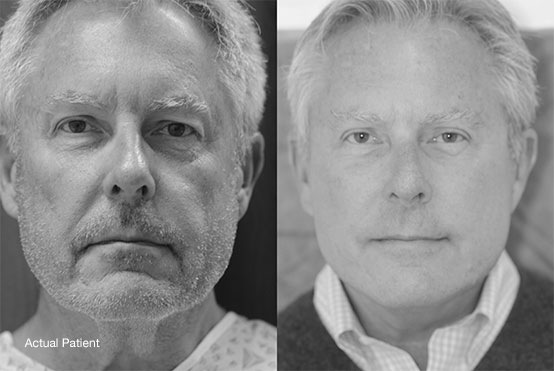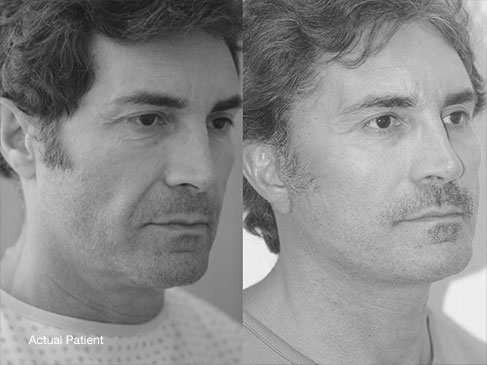Revision Facelift in Beverly Hills
What Is a Revision Facelift?
When a Facelift doesn’t provide you with the results you desire, a revision facelift may be necessary to restore or enhance your facial appearance. For some men, their primary facelift yielded unnatural results or simply didn’t achieve the extensive results they envisioned. Other patients received a facelift five or more years ago and are looking to refresh their appearance. A revision facelift improves a primary surgery but is a more delicate and complicated procedure. Dr. Calabria’s revolutionary revision facelift technique is designed to restore an attractive facial appearance while limiting scarring and enhancing facial volume.

The Benefits of a Revision Facelift
- Improves unsatisfactory facelift results
- Minimizes visible scarring from a previous facelift
- Eliminates facial wrinkles
- Tightens sagging facial skin
- Restores lost facial volume

Benefits of Dr. Calabria’s Revision Facelift
Improves Poor Facelift Results
When a facelift is performed poorly or involves pulling the skin horizontally, it can result in a tight facial appearance. Dr. Calabria releases and pulls the tissues in a vertical manner, which creates a smoother, more natural appearance. Occasionally, the deep underlying muscular structure is also pulled too tight and causes dents, depressions, and altered facial expressions. Dr. Calabria’s revision technique involves releasing the existing sutures to relax the muscles.
Corrects Poorly Placed Earlobes
Poorly placed earlobes can result in unsatisfactory facelift results. Dr. Calabria believes that the small detail of earlobe placement and size can affect the quality of your facelift results. Repositioning the earlobes so they are less prominent creates a more natural appearance. In some cases, Dr. Calabria will improve the size of overly large earlobes, which can help provide a more youthful appearance.
Improved Scarring
Visible scarring is usually caused by tension on the incision, creating hypertrophic scarring. Dr. Calabria uses existing scarring to provide access to the underlying tissues and then uses his tension-free suturing technique to improve the appearance of or reduce existing scarring. Improving the appearance of scars helps create a more natural-looking facelift and enhanced results.
Restores Lost Volume
Volume loss can be the natural result of aging, or it may be the result of depressions caused by muscles that have been pulled too tight. A sunken facial appearance can cause you to look older or more tired than you are. Dr. Calabria uses cell-enhanced fat grafting to restore lost facial volume. By harvesting patient fat, purifying it, and then injecting into the face, Dr. Calabria is able to custom-sculpt newly volumized faces. It is ideal for male patients because it can help craft more masculine features and doesn’t require extra incisions.
After a thorough consultation, Dr. Calabria will determine which techniques will best suit your individual needs. Dr. Calabria can combine various revision facelift techniques to target your trouble areas for a truly unique and customized facelift. Dr. Calabria’s goal as a revision facelift surgeon is to ensure that every patient receives results that highlight their facial structures and that appropriately address their personal desires.
Schedule a ConsultationFaq
Revision facelift surgery is performed as an outpatient procedure using general anesthesia. While general anesthesia provides a safe and comfortable surgery, patients who require minimal facial correction may qualify for local anesthesia.
Your revision facelift recovery will be similar to your primary facelift recovery. You will be required to keep your face elevated for one week following your surgery. Most patients can return to work within two weeks. You can resume your normal activities after four weeks. Most major swelling should subside within six weeks.
It is important that you allow plenty of time for your incisions to heal and for possible scarring to soften. You should also allow time for minor underlying swelling to subside. In some cases, minor swelling can affect the appearance of your results and may resolve naturally. It is suggested that most patients wait six months to a year before undergoing a second facelift.
Some patients do experience mild discomfort during the first week of facelift recovery, which is often caused by swelling. Oral medication can be used to control any associated pain that may occur.
